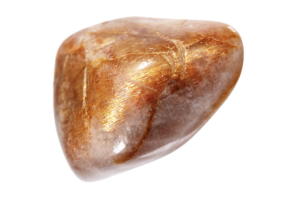USD
/
USD
/
Shipping to:
Currency:
How to Tell if a Sapphire Is Real – A Complete Guide
Determining whether a sapphire is genuine can be a bit of a challenge, especially with the prevalence of synthetic and imitation stones in the market.
Sapphires are not only valuable but often hold significant sentimental value, making it essential to ensure their authenticity.
In this guide, we'll explore various methods to help you identify a real sapphire.
Understanding Natural vs. Synthetic Sapphires
A natural sapphire is a gemstone formed over millions of years beneath the Earth's surface, while synthetic sapphires are created in laboratories to mimic the natural ones.
Although they share the same chemical composition, synthetic sapphires often lack the unique inclusions found in natural stones.
Imitation sapphires, on the other hand, are made from entirely different materials, such as glass or plastic, and only resemble sapphires in appearance.
For those interested in sapphire jewelry, explore these gemstone engagement rings featuring stunning sapphires.
Why Authenticity Matters
Ensuring your sapphire is genuine is crucial for several reasons:
- Value Preservation: Natural sapphires are more valuable than their synthetic counterparts.
- Sentimental Significance: Authentic stones carry a unique history and rarity.
- Ethical Considerations: Knowing the origin can ensure ethical sourcing and environmental responsibility.
If you're considering alternatives to traditional diamond rings, check out these non-traditional engagement rings that feature unique gemstones.
Signs Your Sapphire Might Be Fake
Flawless Appearance
Natural sapphires typically have inclusions—tiny internal flaws.
A stone that appears too perfect may be synthetic or an imitation.
Unnatural Color
While sapphires come in various colors, overly vivid or uniform hues can indicate a synthetic origin.
Low Price
If the deal seems too good to be true, it probably is.
Authentic sapphires command higher prices due to their rarity.
Home Tests to Identify a Real Sapphire
Breath Test
Gently breathe on the sapphire to fog it up.
A real sapphire's fog will dissipate quickly, usually within two seconds.
In contrast, a fake stone will remain foggy for about five seconds.
Magnification Inspection
Using a jeweler's loupe, inspect the stone for inclusions.
Natural sapphires often have tiny flaws, while synthetic ones may contain gas bubbles or appear flawless.
Water Drop Test
Place a single drop of water on the stone's surface.
On a real sapphire, the water should remain as a bead due to the stone's surface tension.
If it spreads out or smears, the stone might be fake.
Professional Evaluation
For a definitive assessment, consult a certified gemologist.
They can provide detailed insights into the stone's origin and authenticity.
Additionally, obtaining a certificate from reputable organizations like the Gemological Institute of America can offer peace of mind.
For more information on gemstone formation and differences, read this helpful article.
Common Misconceptions
- Hardness Test: While sapphires are hard, attempting to scratch them can damage the stone and isn't recommended.
- Color Alone Determines Authenticity: Color variations exist in both natural and synthetic sapphires; thus, color alone isn't a reliable indicator.
Purchasing Tips
When buying a sapphire:
- Buy from Reputable Dealers: Ensure the seller has positive reviews and offers certification.
- Request Documentation: Authentic stones often come with certificates detailing their properties and origin.
- Be Cautious of Bargains: Extremely low prices can be a red flag for synthetic or imitation stones.
If you're looking for exquisite sapphire jewelry, consider these gemstone rings that showcase the beauty of authentic sapphires.
You may also want to read this helpful comparison on lab-grown diamonds vs gemstones when deciding which stone is right for you.
FAQs
Can sapphires be fake?
Yes, there are synthetic and imitation sapphires that mimic the appearance of natural ones.
How much does a real sapphire cost?
Prices vary based on size, color, and quality, but natural sapphires are generally more expensive than synthetic ones.
What color sapphire is most valuable?
Deep blue sapphires are traditionally the most sought after, but value also depends on clarity and origin.
Can lab-created sapphires be considered real?
Lab-created sapphires have the same chemical composition as natural ones








